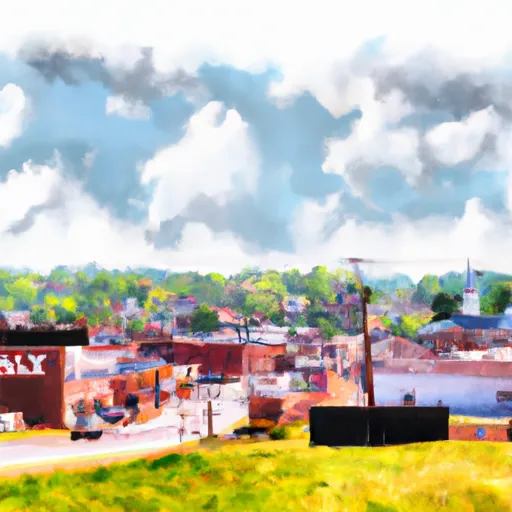-
 Snoflo Premium
Snoflo Premium
Get unlimited access to all our content
With no Ad interruptions! - Start Your Free Trial Login with existing account
Lily
Eden Index
Climate
8.1
•
Recreation
3.7
•
Community
0.7
•
Safeguard
4.7/10

Lily, Kentucky is a small community located in Laurel County in the southeastern part of the state. The climate in Lily is characterized by hot and humid summers, with temperatures reaching the upper 80s and occasionally the 90s Fahrenheit. Winters are generally mild, with temperatures in the 30s and 40s Fahrenheit. The area experiences moderate rainfall throughout the year, with the wettest months being May and July.
Lily is surrounded by beautiful natural landscapes, with several bodies of water nearby. Laurel River Lake is a popular destination for outdoor enthusiasts, offering opportunities for boating, fishing, and swimming. Additionally, Lily is close to the Daniel Boone National Forest, providing access to hiking trails, camping spots, and scenic overlooks.
Hydrology constituents in Lily include the Laurel River, which flows through the area and eventually feeds into Laurel River Lake. The lake serves as a water supply reservoir and also offers recreational activities such as water skiing and jet skiing.
Overall, Lily, Kentucky provides a pleasant climate for outdoor activities, making it an ideal destination for those who enjoy water-based recreation and exploring the natural beauty of the region.
What is the Eden Index?
The Snoflo Eden Index serves as a comprehensive rating system for regions, evaluating their desirability through a holistic assessment of climate health, outdoor recreation opportunities, and natural disaster risk, acknowledging the profound impact of these factors on livability and well-being.
Climate Health Indicator (CHI): 8.1
Lily receives approximately
1228mm of rain per year,
with humidity levels near 81%
and air temperatures averaging around
13°C.
Lily has a plant hardyness factor of
6, meaning
plants and agriculture in this region thrive during a short period during spring and early summer. Most
plants will die off during the colder winter months.
By considering the ideal temperature range, reliable water supplies, clean air, and stable seasonal rain or snowpacks, the Climate Health Indicator (CHI) underscores the significance of a healthy climate as the foundation for quality living.
A healthy climate is paramount for ensuring a high quality of life and livability in a region, fostering both physical well-being and environmental harmony. This can be characterized by ideal temperatures, reliable access to water supplies, clean air, and consistent seasonal rain or snowpacks.
Weather Forecast
Streamflow Conditions
Upper Cumberland
Area Rivers
Upper Cumberland
Snowpack Depths
Upper Cumberland
Reservoir Storage Capacity
Upper Cumberland
Groundwater Levels
Recreational Opportunity Index (ROI): 3.7
The Recreational Opportunity Index (ROI) recognizes the value of outdoor recreational options, such as parks, hiking trails, camping sites, and fishing spots, while acknowledging that climate plays a pivotal role in ensuring the comfort and consistency of these experiences.
Access to outdoor recreational opportunities, encompassing activities such as parks, hiking, camping, and fishing, is crucial for overall well-being, and the climate plays a pivotal role in enabling and enhancing these experiences, ensuring that individuals can engage in nature-based activities comfortably and consistently.
Camping Areas
| Campground | Campsites | Reservations | Toilets | Showers | Elevation |
|---|---|---|---|---|---|
| Hanging Dog | 49 | 1,668 ft | |||
| Holly Flats | 17 | 1,935 ft | |||
| Fires Creek Hunt Camp | 20 | 1,845 ft | |||
| North River Composite | 31 | 1,970 ft | |||
| Snowbird Camping | 28 | 2,223 ft | |||
| Big Oak Cove | 12 | 2,585 ft | |||
| Davis Branch | 5 | 2,281 ft | |||
| Poteete Creek | None | 1,832 ft | |||
| Spivey Cove | 17 | 2,009 ft | |||
| State Line | 10 | 2,602 ft |
Catastrophe Safeguard Index (CSI):
The Catastrophe Safeguard Index (CSI) recognizes that natural disaster risk, encompassing floods, fires, hurricanes, and tornadoes, can drastically affect safety and the overall appeal of an area.
The level of natural disaster risk in a region significantly affects safety and the overall livability, with climate change amplifying these risks by potentially increasing the frequency and intensity of events like floods, fires, hurricanes, and tornadoes, thereby posing substantial challenges to community resilience and well-being.
Community Resilience Indicator (CRI): 0.7
The Community Resilience Indicator (CRI) recognizes that education, healthcare, and socioeconomics are crucial to the well-being of a region. The CRI acknowledges the profound impact of these elements on residents' overall quality of life. By evaluating educational resources, healthcare accessibility, and economic inclusivity, the index captures the essential aspects that contribute to a thriving community, fostering resident satisfaction, equity, and social cohesion.

